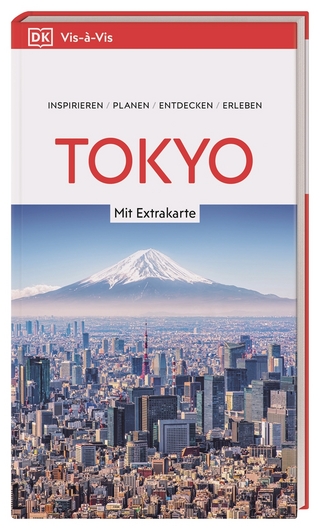
The Routledge Handbook of Cultural Landscape Heritage in The Asia-Pacific
Routledge (Verlag)
978-0-367-56939-6 (ISBN)
Taking both a retrospective and prospective view of the management of cultural heritage in the region, this volume argues that the plurality and complexity of heritage in the region cannot be comprehensively understood and effectively managed without a broader conceptual framework like the cultural landscape approach. The book also demonstrates that such an approach facilitates the development of a flexible strategy for heritage conservation. Acknowledging the effects of rapid socio-economic development, globalization, and climate change, contributors examine the pressure these issues place on the sustenance of cultural heritage. Including chapters from more than 20 countries across the Asia-Pacific region, the volume reviews the effectiveness of theoretical and practical potentials afforded by the cultural landscape approach and examines how they have been utilized in the Asia-Pacific context for the last three decades.
The Routledge Handbook of Cultural Landscape Heritage in the Asia-Pacific provides a comprehensive analysis of the processes of cultural landscape heritage conservation and management. As a result, it will be of interest to academics, students, and professionals who are based in the fields of cultural heritage management, architecture, urban planning, landscape architecture, and landscape management.
Kapila D. Silva is a Professor of Architecture in the School of Architecture and Design at the University of Kansas, USA. Ken Taylor, Emeritus Professor, is an Honorary Professor at the Centre for Heritage & Museum Studies, Research School of Humanities and Arts at the Australian National University, Canberra, Australia. David S. Jones oversees Strategic Planning and Urban Design for the Wadawurrung Traditional Owners Aboriginal Corporation in Djilang/Geelong and Ballaarat/Ballarat in Australia.
Foreword
Richard Engelhardt
Introduction: Managing Cultural Landscape Heritage in the Asia-Pacific
Part I: Managing Cultural Landscapes for Thirty Years: A Retrospective
Chapter 1
The Intellectual Context of Cultural Landscape Construct
Chapter 2
Concerning Intangible Associations and Authenticity in Cultural Landscapes
Chapter 3
Thirty Years of World Heritage Cultural Landscapes: a critical review
Chapter 4
World Heritage Cultural Landscapes: Synergies in the Asia-Pacific Region
Chapter 5
Whither Designed Landscapes inside the World Heritage Program in the Asia-Pacific Arena
Part II: Nature-Culture linkages of Cultural Landscapes
Chapter 6
Genes and Memes in Cultural Landscape conservation: Biocultural, Ecocultural, or just plain Cultural?
Chapter 7
Toward conservation models that link nature and culture: A Retrospective on Stewardship of ‘biocultural’ landscapes
Chapter 8
Challenges of Managing IUCN Protected Landscapes in the Pacific
Chapter 9
Exploring Nature-Culture Linkages beyond Cultural Landscapes: Lessons learned from Capacity Building in Asia and the Pacific
Part III: Localized Stewardship of Cultural Landscapes
Chapter 10
Community Stewardship of Historic Urban Landscape of George Town, Penang, Malaysia
Chapter 11
The Role of Community in the Management of Heritage at Bagan, Myanmar
Chapter 12
Inhabitants’ Shared Interpretation and Consistent Management of Landscapes in Korean Clan Villages
Chapter 13
A Himalayan Landscape shared by Bon Monks and Snow Leopards: Upper Dolpo, Nepal
Chapter 14
Adivāsis and their cultural landscapes in India
Chapter 15
Cultural Landscape Heritage of Aotearoa New Zealand: Mai i te Pōuri? From the Darkness?
Chapter 16
Tapestries of Place, Spirit, Time, Meanings and Values: The Heritage of First Nations in Australia and New Zealand/Aotearoa
Part IV: Re-reading Cultural Landscapes
Chapter 17
Cultural Landscape Conservation: The Case of Mornington Peninsula, Australia
Chapter 18
Re-reading Shanghai as a Cultural Landscape: Culture Brought to the Core
Chapter 19
Cultural Landscapes in the Indian Subcontinent: The case of Military Landscapes in India and Myanmar
Chapter 20
Reinforcing Philippine Cultural Landscape Values through the Schools of Living Tradition (SLTs): Mimicry to memory
Chapter 21
Mapping Intangible Cultural Heritage in Asian historic urban landscapes
Chapter 22
The Ritual Landscapes of Hindu Temple
Chapter 23
Reclaiming the Landscape of Pilgrimage: Walking the Panchkroshi in Varanasi, India
Part V: Toward Resilient Cultural Landscapes
Chapter 24
Cultural Landscapes of the Asia-Pacific Context: Dilemmas of Resilience
Chapter 25
The Cultural Landscape of the Persian Qanat
Chapter 26
Customary Knowledge and Resilience in the Cultural Landscapes of the Pacific Islands: The Village Landscape of Yap, Micronesia
Chapter 27
Hawai‘i’s Cultural Landscapes, Indigenous and Colonial: Parallel Visions
Chapter 28
The Cultural Landscapes of the Comoros, Maldives, Mauritius, Mayotte, Réunion, and Seychelles: Islands of diaspora, slavery, and trade
Chapter 29
A Requiem to the Ailing Landscape of an Ancient Culture: Manchar Lake and the Mohannas in Pakistan
Chapter 30
Use of Digital Technology in Mapping Rural Cultural Landscapes and their Human-Nature Interactions
Index
| Erscheinungsdatum | 05.07.2022 |
|---|---|
| Reihe/Serie | Routledge Handbooks on Museums, Galleries and Heritage |
| Zusatzinfo | 14 Tables, black and white; 84 Halftones, black and white; 84 Illustrations, black and white |
| Verlagsort | London |
| Sprache | englisch |
| Maße | 174 x 246 mm |
| Gewicht | 1480 g |
| Themenwelt | Kunst / Musik / Theater |
| Reisen ► Reiseführer ► Asien | |
| Reisen ► Reiseführer ► Australien / Neuseeland / Ozeanien | |
| Geisteswissenschaften ► Geschichte ► Hilfswissenschaften | |
| Naturwissenschaften ► Biologie ► Ökologie / Naturschutz | |
| Sozialwissenschaften ► Politik / Verwaltung ► Staat / Verwaltung | |
| Sozialwissenschaften ► Soziologie ► Spezielle Soziologien | |
| Technik ► Architektur | |
| ISBN-10 | 0-367-56939-6 / 0367569396 |
| ISBN-13 | 978-0-367-56939-6 / 9780367569396 |
| Zustand | Neuware |
| Informationen gemäß Produktsicherheitsverordnung (GPSR) | |
| Haben Sie eine Frage zum Produkt? |
aus dem Bereich


